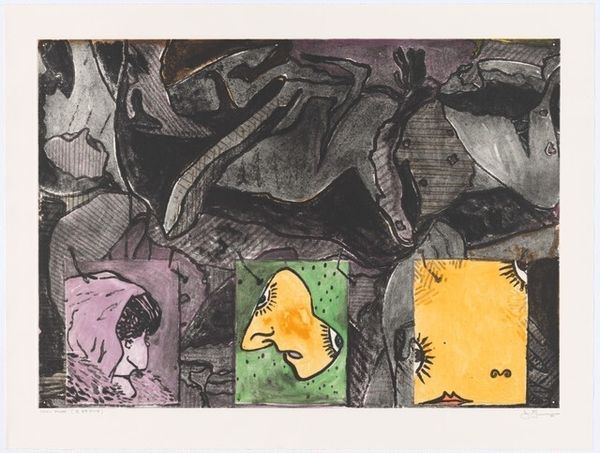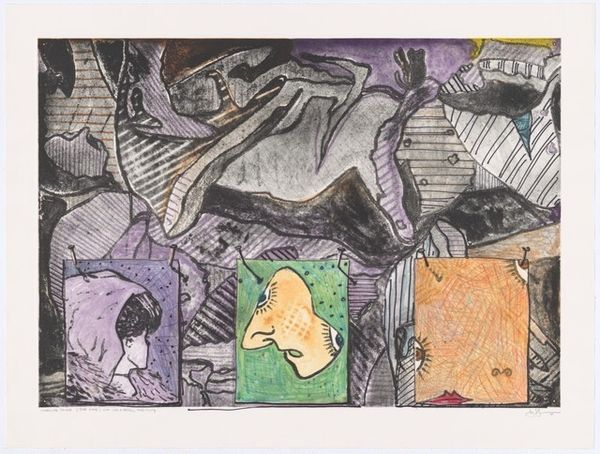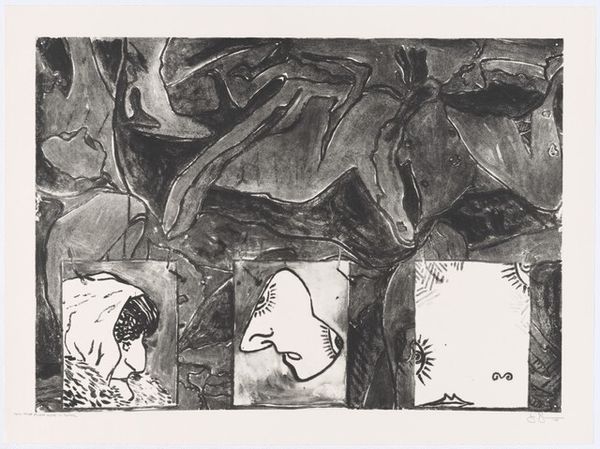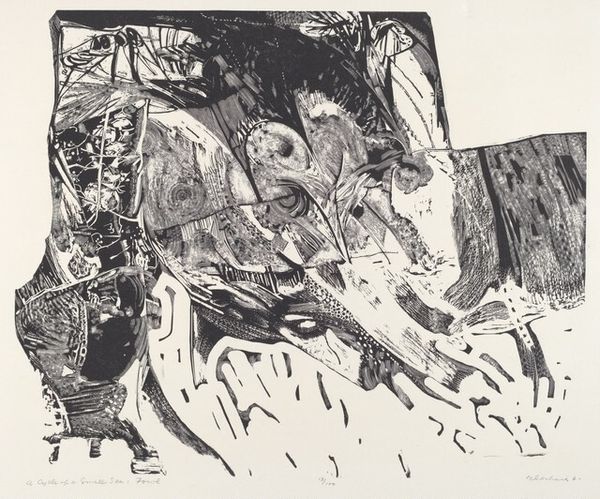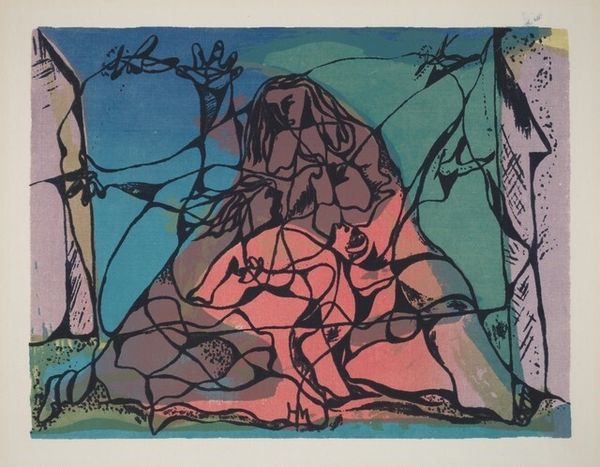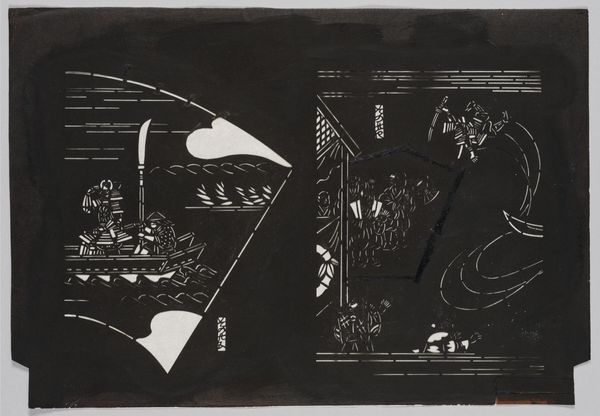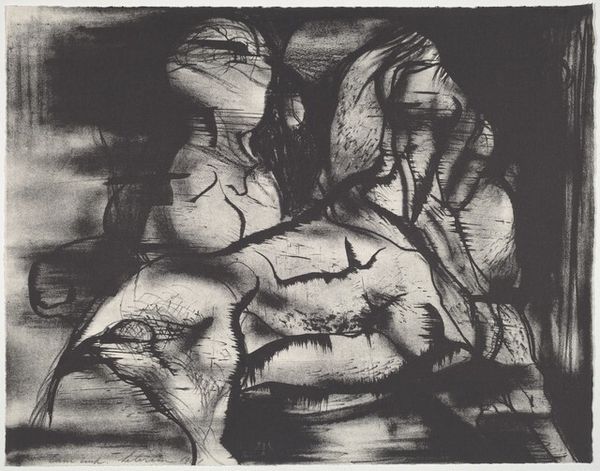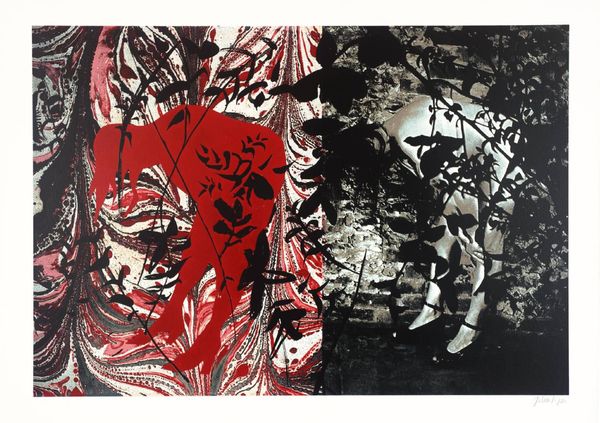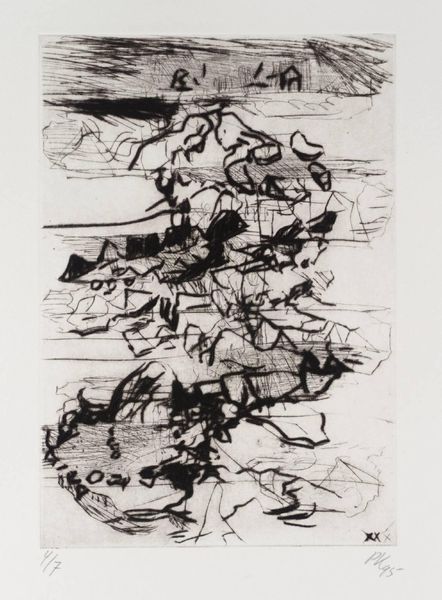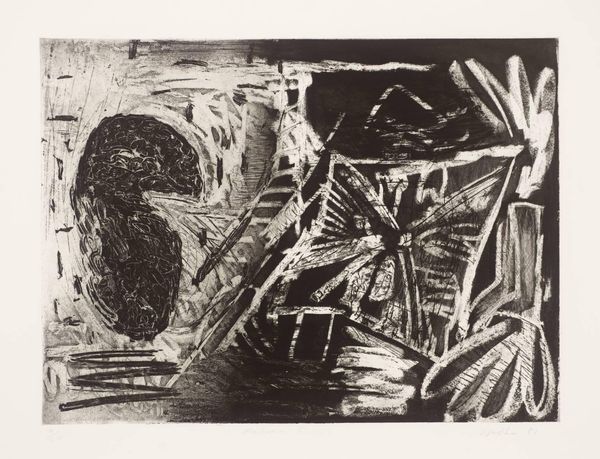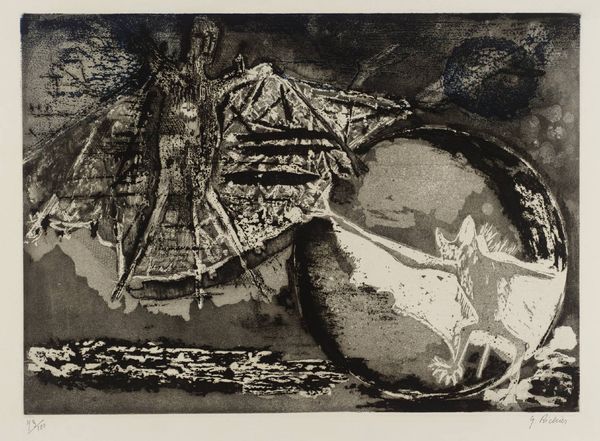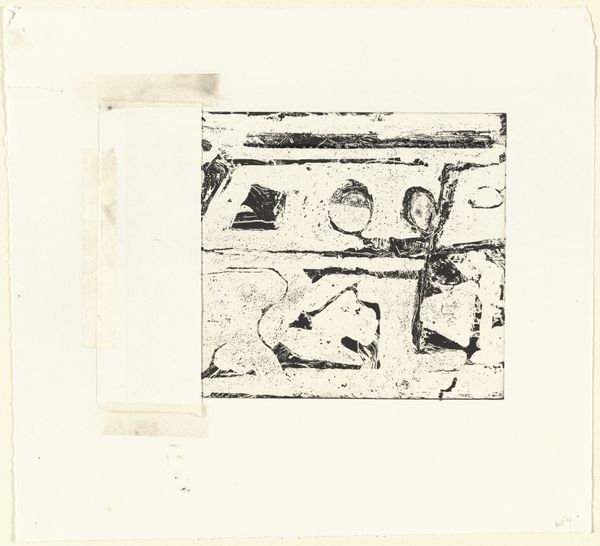
print, etching
ink drawing
pen illustration
etching
figuration
linocut print
neo-dada
abstraction
Dimensions: plate: 75.25 x 119.38 cm (29 5/8 x 47 in.) sheet: 90.49 x 119.38 cm (35 5/8 x 47 in.)
Copyright: National Gallery of Art: CC0 1.0
Curator: Looking at this print, there's a definite feeling of something lurking, unsettled… almost like fragmented memories surfacing in a dream. Editor: Precisely. What you're describing echoes much of Jasper Johns' practice, especially his late work. This piece, "Untitled (final state - plate in black)" from 1988, exemplifies how Johns confronts layered identities through art. Curator: Can you elaborate on the “layered identities” you mention? Editor: Johns pulls from art history, from his own previous works, and from broader cultural symbols. Notice the juxtaposition of the abstract background with the three framed images along the bottom. Each "frame" functions like a distinct narrative thread within a broader discussion about visibility. Curator: Those smaller images… one seems to contain a face in profile, another more fragmented features, and the third… what, symbols of suns, perhaps, and curling lines? They all seem very different, creating a dissonance. Editor: It’s intentional, that tension. These recurring images carry specific emotional weight. Consider the faces as stand-ins for identity, their varying degrees of clarity indicating aspects of being concealed and revealed. The symbols also speak volumes. Johns’ works are always rich with recurring, personal, and adopted images that take on iconic importance. Curator: The etching method certainly adds to the emotional depth, with its stark contrasts. In considering how identity intersects race during the 1980s, would you say that this piece engages with broader issues of representation, even implicitly? Editor: Yes, absolutely. Though abstract, the work critiques power structures related to who gets seen and how. Even the title, so purposefully “Untitled,” subverts expectations of a clear message and promotes audience interpretations through intersectional views. Curator: I see how, beyond its aesthetic appeal, the image presents itself as a social and psychological mirror. Thank you. Editor: It's Johns’ capacity for deeply considering identity—through symbolic language—that continues to makes him impactful.
Comments
No comments
Be the first to comment and join the conversation on the ultimate creative platform.
